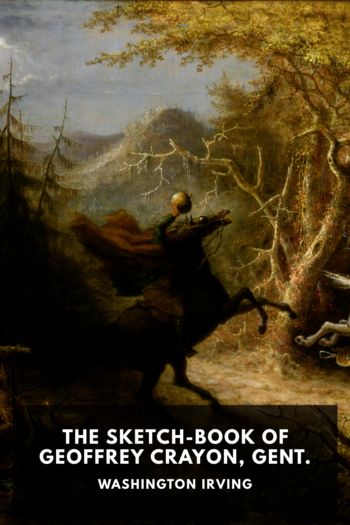Loverly:The Life and Times of My Fair Lady (Broadway Legacies) by McHugh, Dominic (e reader comics TXT) 📕

Read free book «Loverly:The Life and Times of My Fair Lady (Broadway Legacies) by McHugh, Dominic (e reader comics TXT) 📕» - read online or download for free at americanlibrarybooks.com
Read book online «Loverly:The Life and Times of My Fair Lady (Broadway Legacies) by McHugh, Dominic (e reader comics TXT) 📕». Author - McHugh, Dominic
Langner and Pascal now turned to Lerner and Loewe, who had written four Broadway shows together: What’s Up? (1943), The Day Before Spring (1945), Brigadoon (1947), and Paint Your Wagon (1951). The timing of the first three of these is ironic, since it reflects that of Rodgers and Hammerstein’s first three shows together, and the fates of their respective shows were opposite: What’s Up? was a flop that opened in the same year as their record-breaking Oklahoma!; The Day Before Spring fared only slightly better than its predecessor and has fallen into obscurity, unlike the contemporaneous Carousel; and Rodgers and Hammerstein’s third show, Allegro, was their first critical and financial disappointment, opening in the same year as Brigadoon, Lerner and Loewe’s first great success.
Without Brigadoon, who knows what may have become of the Lerner and Loewe partnership. Neither What’s Up? nor The Day Before Spring produced anything approaching a hit song, and indeed much of the score for the former is lost.15 Lerner and Loewe had also collaborated on Life of the Party in 1943, and this piece did not even make it to Broadway, so by 1947 they were badly in need of success. Thankfully Brigadoon became one of the longest-running musicals of the decade and gave birth to a number of standards, including “The Heather on the Hill” and “Almost Like Being in Love.” It took four years before the pair teamed up again for Paint Your Wagon, and here a troublesome rehearsal and tryout period led to a disappointing show. Even though a number of the songs became well known, including “They Call the Wind Maria” and “Wandrin’ Star,” the Wild West setting was a poor fit for Loewe, and Lerner failed to resolve numerous problems with the book.
The team’s track record is ample demonstration of the reason they were included on the list of possible collaborators for the Pygmalion musical and also why they were not at the top of it. To turn to the old pros Irving Berlin and Cole Porter first was natural, since they had each had relatively recent smash hits with Annie Get Your Gun (1946) and Kiss Me, Kate (1948), respectively; Berlin was also represented on Broadway with Call Me Madam (1950). Since the task consisted of adapting a classic of English literature, one can see in particular why the composer of Kiss Me, Kate (partly based on Shakespeare’s The Taming of the Shrew) would be asked: obviously, a lyricist of sharp wit and a composer with a lightness of touch were needed. Although less experienced as a composer-lyricist—his early years were spent writing lyrics to other composers’ music—Frank Loesser was also an easy fit, given the artistic brilliance and box office success of Guys and Dolls. On the other hand, the triumph of Brigadoon had established Lerner and Loewe’s credentials, and the European pedigree of both composer (who was born in Berlin) and lyricist (who was educated in England) must have seemed an obvious fit for Gabriel Pascal and the Theatre Guild.
Pascal met with Lerner and gained his assurance of the Brigadoon team’s interest in the project during the time they were in Hollywood filming that particular show. It is certain, according to David Drew, that Lerner had earlier considered setting the play with Kurt Weill during the 1940s, so the material was not unknown to him.16 Lerner’s memoir leaves out the Theatre Guild and suggests that Pascal approached him of his own accord, but in her memoir about the Pascal-Shaw relationship, Pascal’s widow, Valerie, writes more credibly that Lawrence Langner proposed Lerner and Loewe as the creative team. After a private screening of the film Pygmalion, she adds, they became enthusiastic about it. She then states that Lerner and Loewe “came to our house in California on March 21, 1952. During lunch they seemed very eager to tackle the musical, provided Mary Martin would accept the role of Eliza Doolittle. Without her, they felt the musical would not stand up.”17 However, a telegram of March 22 in the Theatre Guild papers shows that it was only at this point that Langner wrote to Pascal to arrange the screening of his film for them, also making reference to having had a “very successful meeting with Lerner and Loewe” and having “succeeded in getting them very interested and excited,” so the film was probably not the start of their fascination with the project.18
In May, serious talks took place about casting for the part of Eliza Doolittle; at this point, Eliza rather than Higgins was thought of as the lead role, and it was to be a showcase for a great star. The two biggest female musical comedy actresses of the time were Ethel Merman, who had enjoyed success in Gershwin’s Girl Crazy, several Porter shows including Anything Goes, and Berlin’s Annie Get Your Gun and Call Me Madam; and Mary Martin, who had grown in prominence during the 1940s with shows such as Weill’s One Touch of Venus before her career-defining appearance in Rodgers and Hammerstein’s South Pacific. Merman’s stage persona was ill suited to Eliza Doolittle, but as strange as it might seem in hindsight, the subtler Mary Martin was in fact a strong possibility. This part of the story has been whitewashed over the years, however. In The Street Where I Live Lerner claims that Martin heard he





Comments (0)